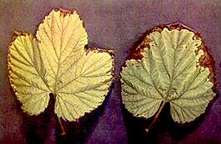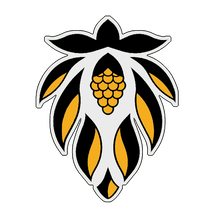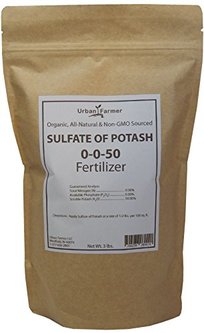 Potassium deficiency Potassium deficiency Do's and Don'ts One of the ways to increase hop's potential for winter damage is to cut bines too short during harvest. If you remove the energy-producing top growth completely prior to fall dormancy, the plant may not have adequate energy to initiate vigorous spring growth. A harvest cutting height of 2 to 3 feet is recommended for most hop varieties. Ideally, allow 6-8 weeks of top growth to remain after harvest before removing remaining bines to ensure adequate storage of carbohydrates for winter. A final fall cut bine height of 2 inches above visible crown buds is recommended. Cover any visible crown buds with a shallow layer of soil for winter protection. Read our previous posts for more on minimizing crown damage. Initial spring bine growth and emergence utilizes stored carbohydrates in the permanent fleshy root system. These stored carbohydrates are used for initial spring emergence and growth until the hop plant has reached about 6 feet of bine height. After this primary push, energy produced by photosynthesis and nutrients gathered by the new shallow feeder roots fuels more rapid growth up to the wire. N-P-K fertilizers applied in the early spring season plays a small role in primary spring emergence of the bines. Vigorous spring emergence is determined more by how well the plant stored energy the previous fall before going dormant. Avoid late season post-harvest applications of nitrogen in excess of 80 to 100 pounds N/acre; this can delay proper dormancy and increase disease susceptibility. Plants that are late going into dormancy due to excess nutrients are much more likely to be damaged or killed by winter extremes. In conclusion, fall applications of potassium are beneficial to ensure a great spring start and healthy future growth in your hopyard. |
Details
Blog AuthorLynn, the head hop grower at Great Lakes Hops has over 30 years of experience in the horticultural field. Browse the blog articles here to find useful growing information for humulus lupulus, based on personal experience and observations at Great Lakes Hops. Archives
January 2020
Categories
All
|



 RSS Feed
RSS Feed